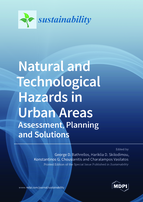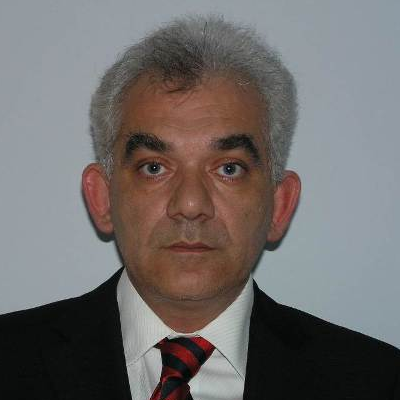Natural and Technological Hazards in Urban Areas: Assessment, Planning and Solutions
A special issue of Sustainability (ISSN 2071-1050). This special issue belongs to the section "Sustainable Urban and Rural Development".
Deadline for manuscript submissions: closed (30 July 2021) | Viewed by 56505
Special Issue Editors
Interests: natural hazards; urban planning; geomorphology; modeling
Special Issues, Collections and Topics in MDPI journals
Interests: GIS; geological mapping; environmental geology; natural hazards; land use planning
Special Issues, Collections and Topics in MDPI journals
Interests: tectonic geodesy; earthquake seismology; GMPEs; seismic hazard; earthquake-induced landslides
Interests: geochemistry; soil pollution control and remediation; hazardous waste, water and wastewater treatment; traditional and novel functional materials and environmental applications
Special Issue Information
Dear Colleagues,
Natural hazard events and technological accidents are separate causes of environmental impacts. Natural hazards are physical phenomena active in geological time, while technological hazards result from actions or facilities created by humans. In our time, combined natural and man-made hazards have been induced.
Overpopulation and urban development in areas prone to natural hazards increase the impact of natural disasters worldwide. Additionally, urban areas are frequently characterized by intense industrial activity and rapid poorly planned growth that threatens the environment and degrades the quality of life. Therefore, a proper urban planning is crucial to minimize fatalities and reduce the environmental and economic impact that accompanies both natural and technological hazardous events.
This Special Issue focuses on:
- all atmospheric, hydrologic, geologic and geomorphologic hazardous natural phenomena that potentially affect human life and activities in urban areas,
- technological hazards such as salinization, desertification, fires, water and soil pollution/degradation, land use changes, climate changes, waste, civil disturbances, dam failure, hazardous materials incidents, pipelines, radiological events and transportation in urban areas.
- mapping, hazard and risk assessment, prevention, protective actions,
- hazard treatment, risk management technology, land use planning,
- innovative technologies, concepts and approaches for hazard mitigation, preparedness, response, and recovery.
Dr. George D. Bathrellos
Dr. Hariklia D. Skilodimou
Dr. Konstantinos G. Chousianitis
Dr. Charalampos Vasilatos
Guest Editors
Manuscript Submission Information
Manuscripts should be submitted online at www.mdpi.com by registering and logging in to this website. Once you are registered, click here to go to the submission form. Manuscripts can be submitted until the deadline. All submissions that pass pre-check are peer-reviewed. Accepted papers will be published continuously in the journal (as soon as accepted) and will be listed together on the special issue website. Research articles, review articles as well as short communications are invited. For planned papers, a title and short abstract (about 100 words) can be sent to the Editorial Office for announcement on this website.
Submitted manuscripts should not have been published previously, nor be under consideration for publication elsewhere (except conference proceedings papers). All manuscripts are thoroughly refereed through a single-blind peer-review process. A guide for authors and other relevant information for submission of manuscripts is available on the Instructions for Authors page. Sustainability is an international peer-reviewed open access semimonthly journal published by MDPI.
Please visit the Instructions for Authors page before submitting a manuscript. The Article Processing Charge (APC) for publication in this open access journal is 2400 CHF (Swiss Francs). Submitted papers should be well formatted and use good English. Authors may use MDPI's English editing service prior to publication or during author revisions.
Keywords
- urban areas
- natural hazards
- technological hazards
- hazard and risk assessment
- mapping
- planning
- solutions








